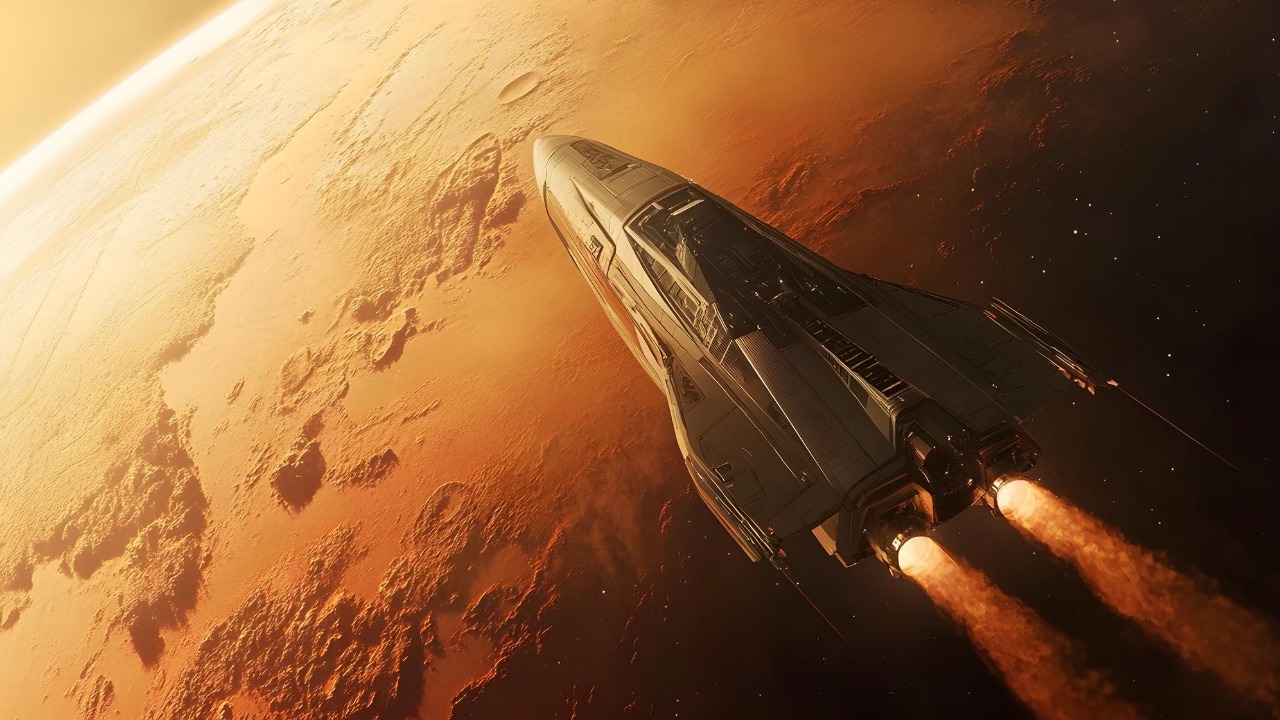
SpaceX’s Starship, heralded as the world’s most powerful and largest rocket, is poised to revolutionize human space travel with its ambitious missions to the Moon and Mars. On August 27, 2025, Starship reached a pivotal milestone by completing a critical test flight, showcasing its operational capabilities for future deep-space endeavors. Elon Musk, the visionary behind SpaceX, has announced plans to launch the largest Starship yet in 2025, although he acknowledges that the chances of reaching Mars by 2026 are ’50/50′. Earlier in the year, a Starship breakup on March 6, 2025, caused disruptions at Florida airports, highlighting the challenges that still lie ahead (Interesting Engineering; Indian Express; Space.com; The New York Times).
Starship’s Technical Specifications
Starship stands as the world’s most powerful and largest rocket, a testament to SpaceX’s innovative engineering. It is designed as a fully reusable system capable of carrying over 100 passengers and substantial cargo payloads, making it ideal for missions to the Moon and Mars. This capability is crucial for supporting long-duration human presence on other celestial bodies, a key goal of SpaceX’s mission (Interesting Engineering).
The Super Heavy booster, a critical component of Starship, provides unprecedented thrust, enabling the rocket to achieve orbit and facilitating orbital refueling. This capability is essential for rapid reusability, a cornerstone of SpaceX’s strategy to make space travel more economical and sustainable. By supporting human exploration beyond Earth, the Super Heavy booster plays a pivotal role in the broader vision of interplanetary colonization (Interesting Engineering).
Equipped with advanced heat shield and flap systems, the Starship upper stage is designed to withstand the rigors of re-entry and ensure precise landings. These systems are vital for the success of interplanetary travel, where accurate re-entry and landing are critical to mission success. The technology not only enhances safety but also improves the efficiency of missions, making repeated trips to the Moon and Mars feasible (Indian Express).
Key Milestones in Starship Development
On August 27, 2025, SpaceX’s Starship completed a critical test flight, validating essential systems such as propulsion and separation. This milestone is significant as it demonstrates the operational readiness of the world’s largest rocket, paving the way for future missions to the Moon and Mars. The successful test underscores SpaceX’s commitment to advancing space exploration technology (Indian Express).
Elon Musk announced on May 30, 2025, that SpaceX plans to launch its biggest Starship yet later this year. This development marks a significant scale-up in vehicle size and performance, reflecting SpaceX’s ambition to push the boundaries of what is possible in space travel. The announcement highlights the company’s continuous efforts to enhance its capabilities and achieve its long-term goals of lunar and Martian colonization (Space.com).
However, the journey has not been without setbacks. On March 6, 2025, a Starship rocket experienced a breakup, leading to disruptions at Florida airports. This incident underscores the challenges SpaceX faces in ensuring the reliability and safety of its spacecraft. Despite these challenges, each test and setback provides valuable insights that drive improvements and innovations in rocket design and operation (The New York Times).
Starship’s Role in Lunar Missions
Starship is set to play a crucial role in NASA’s Artemis program as the designated lander for transporting humans to the Moon’s surface. Its capacity for extended stays and resource utilization makes it an ideal vehicle for lunar missions. By facilitating human presence on the Moon, Starship supports scientific exploration and the potential for future lunar colonization (Interesting Engineering).
Orbital refueling techniques are integral to Starship’s mission profile, allowing it to depart Earth, refuel in space, and execute precise lunar landings. This capability is essential for crewed expeditions, enabling longer missions and the transport of necessary supplies and equipment. The success of these techniques could accelerate the timeline for Moon missions, bringing the vision of a sustainable lunar presence closer to reality (Indian Express).
Successful tests in 2025 could significantly impact the timeline for lunar missions, enabling reusable returns and the deployment of habitats on the Moon. This progress would not only advance scientific research but also lay the groundwork for future human settlement, marking a new era in space exploration (Space.com).
Pathway to Mars Colonization
Starship’s design is tailored for Mars travel, incorporating in-situ resource utilization to produce fuel on the planet. This capability supports long-duration human presence, a critical factor for successful colonization. By enabling self-sufficiency on Mars, Starship paves the way for sustainable human settlements on the Red Planet (Interesting Engineering).
Elon Musk has assessed the odds of a Mars mission in 2026 as ’50/50′, contingent on the successful launch of the largest Starship in 2025 and the resolution of test flight issues. This candid assessment highlights the challenges and uncertainties inherent in pioneering interplanetary travel. Nevertheless, SpaceX’s continued efforts reflect a commitment to overcoming these hurdles and achieving the dream of Mars colonization (Space.com).
Starship’s multi-ship fleet operations are designed to deliver cargo to Mars ahead of crewed flights, establishing infrastructure such as habitats and power systems. This strategic approach ensures that essential resources are in place to support human life, making the vision of a Martian colony more attainable. By laying the groundwork for sustainable living on Mars, SpaceX is setting the stage for a new chapter in human exploration (Indian Express).